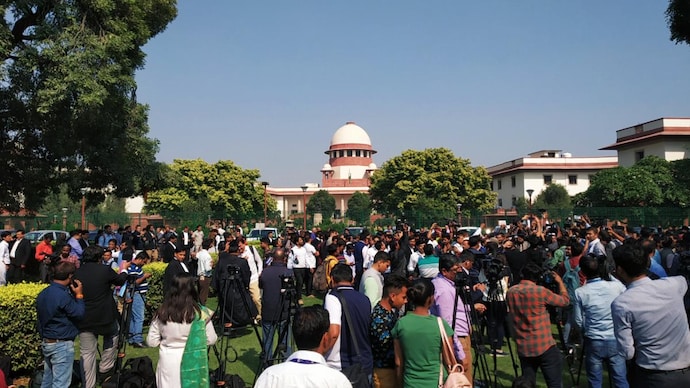Ayodhya verdict in Supreme Court: Turning points in Ram Janmabhoomi case
The seven-decades-old Ayodhya case of the Babri Masjid-Ram Janmabhoomi title dispute reached possibly the final conclusion in the Supreme Court today. Here are the turning points in the judgement.

The Ayodhya case of the Babri Masjid-Ram Janmabhoomi title dispute today reached possibly the final conclusion in the Supreme Court, where five judges of the constitutional bench headed by Chief Justice Ranjan Gogoi delivered its judgment in the seven-decades-old case.
The judgment of the Supreme Court, in the first look, appears to have incorporated the report of the mediation panel it had appointed earlier this year to explore a possibility of out-of-the-court settlement of a legal case that has been as emotive as political in the past several decades.
In the final judgment, the Supreme Court held the rights of Ram Lalla Virajman, the presiding deity of the disputed site. The Supreme Court ordered that the entire land of the Babri Masjid-Ram Janmabhoomi compound, that is, the disputed land of 2.77 acre belongs to Ram Lalla Virajman.
FOLLOW LIVE UPDATES ON AYODHYA VERDICT HERE
The Supreme Court also held that the plea of the Sunni Waqf Board was maintainable. The court ordered the government to allocate a separate piece of land measuring 5 acre outside the disputed site to the Sunni Waqf Board. The land allocation has to be done by the Centre within three months. Once the land is allocated to the Sunni Waqf Board, it would be free to begin construction of a mosque there.
Key points
The 2.77 acre land is broadly divided into two parts - the inner courtyard where the Babri Masjid stood till 1992 and the outer courtyard where Ram Chabutara and Sita Rasoi existed. The Supreme Court held that Hindus have proven their exclusive right over outer courtyard but the Muslim side has failed to prove its exclusive possession right over the inner courtyard.
The Supreme Court held that while records since the British period show that the Muslims did not abandon their claim on the inner courtyard but the Hindus had been longing to worship under the central dome of the Babri Masjid believing it was the birthplace of Lord Ram.
The Supreme Court held that it is beyond its jurisdiction to decide if the faith of the Hindus was valid or not but their belief that Lord Ram was born under the central dome has been proven genuine.
It has been proven, the Supreme Court held, that Babri Masjid was built by Mughal military commander Mir Baqi on the orders of Emperor Babar. It also held that the Babri Masjid was not built on a vacant land. There was a non-Islamic structure upon which the Babri Masjid was constructed.
Combining the above points, the Supreme Court held the title right of Ram Lalla over the disputed land. But the fact that the Babri Masjid stood at the site and that the Muslims performed Friday prayers consistently during the British period makes their belief equally genuine, and hence they hold the right to have a mosque to correct the wrong committed in the demolition of the structure. A five-acre land, the court directed the Centre, to provide to the Sunni Waqf Board for a mosque in Ayodhya.
The plea of the Nirmohi Akhara to be recognised as the shebaiti was rejected. The Shia Waqf Board's plea that the Sunni Waq Board did not have a right to make claim on the disputed site was also rejected.
READ | Ayodhya Ram Mandir case judgment: Supreme Court rules in favour of Ram Mandir | 10 Highlights
READ | Ayodhya verdict live streaming: How to watch SC's historic judgement on India Today
READ | Full coverage of Ayodhya Case Verdict
WATCH: All you need to know about Ayodhya land dispute

